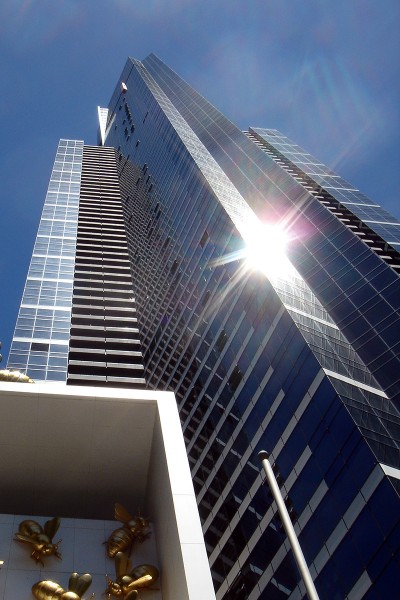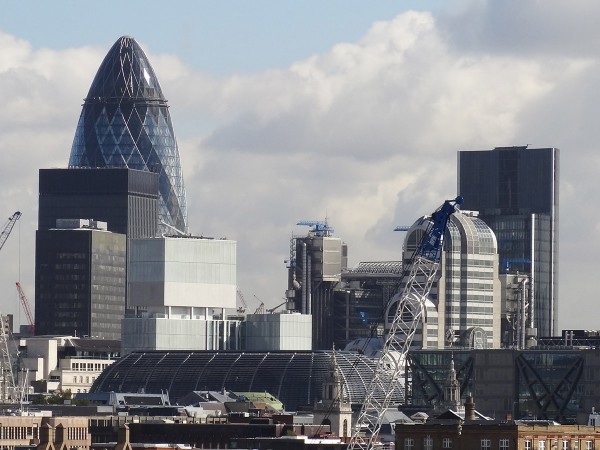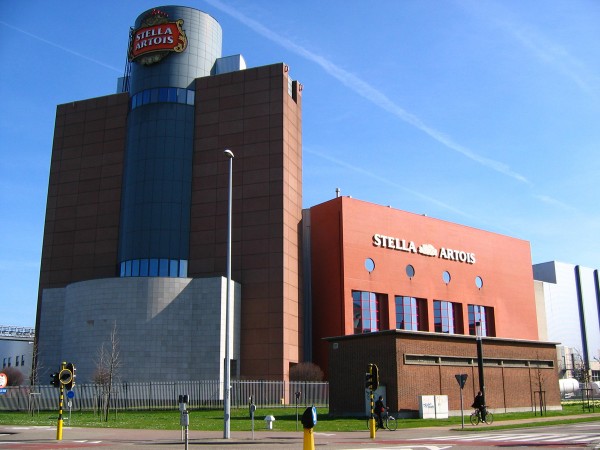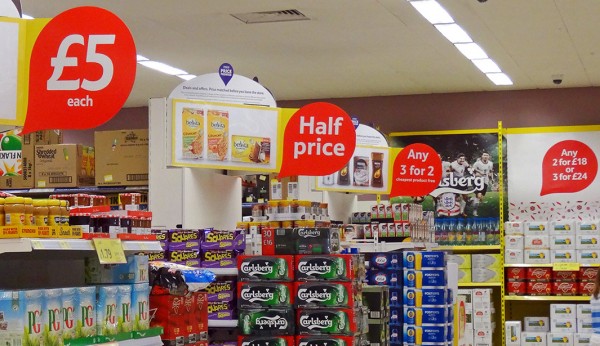 Global merger and acquisition deals with a combined value of £2.7 trillion ($4.06 trillion) have taken place so far this year (1 Jan to 3 Nov). This is a 38% increase on the same period in 2014 ($2.94 trillion) and even surpasses the previous record high for the same period in 2007 ($3.93 trillion) (see the chart from the Dealogic article linked below).
Global merger and acquisition deals with a combined value of £2.7 trillion ($4.06 trillion) have taken place so far this year (1 Jan to 3 Nov). This is a 38% increase on the same period in 2014 ($2.94 trillion) and even surpasses the previous record high for the same period in 2007 ($3.93 trillion) (see the chart from the Dealogic article linked below).
Measured by dollar value, October was the fifth biggest month in Mergers and Acquisitions (M&As) history with the announcement of $514bn of actual or proposed deals. These included:
|
|
| • |
the proposed £71 billion deal to acquire SABMiller (the world’s second largest brewer) by AB InBev (the world’s largest brewer); |
| • |
the $67bn takeover of network storage provider EMC by Dell (the world’s third largest computer supplier); |
| • |
the proposed deal to acquire Allergan (producer of Botox) by Pfizer (the producer of Viagra). |
Although the dollar value of M&As was extremely large in October the actual number of deals, 2177, was significantly lower than the average of 3521 over the previous 9 months.
Are these large M&As in the interests of the consumer? One advantage is that the newly combined firms may have lower average costs. Reports in the press, following the announcement of most M&As, often discuss the potential for reductions in duplicate resources and rationalisation. After the successful completion of a takeover two previously separate departments, such as finance, law or HRM, may be combined into one office. If the newly integrated department is (i) smaller than the previous two departments added together and (ii) can operate just as effectively, then average costs will fall. This is simply an example of an economy of scale.
Average costs will also decrease if x-inefficiency within the acquired business can be reduced or eliminated. X-inefficiency exists when an organisation incurs higher costs than are necessary to produce any given output. In other words it is not producing in the cheapest possible way. In a number of takeovers in the brewing industry, AB InBev has gained a fearsome reputation for minimising costs and removing any waste or slack in acquired organisations. In an interview with the Financial Times, its chief executive, Carlos Brito, stated that:
“In any company, there’s 20 per cent that lead, 70 per cent that follow and 10 per cent that do nothing. So the 10 per cent, of course, you need to get rid of.”
If any reduction in costs results in lower prices without any lessening in the quality of the good or service, then of course the customer will benefit. However, when two relatively large organisations combine, it may result in a newly merged business with considerable market power. With a fall in the price elasticity of demand for its goods and services, this bigger company may be able to increase its prices and make greater revenues.
An important responsibility of a taxpayer-funded competition authority is to make judgements about whether or not large M&As are in the public interest. For example, the Competition and Markets Authority in the UK investigates deals if the target company has a UK turnover that exceeds £70 million, or if the newly combined business has a market share that is equal to or exceeds 25 per cent. If the CMA concludes that an M&A would lead to a substantial lessening of competition in the market, then it could prohibit the deal from taking place. This has only happened on 9 occasions in the last 12 years. If competition concerns are identified, it is far more likely that CMA will allow the deal to go ahead but with certain conditions attached. This has happened 29 times in the last 12 years and the conditions are referred to as remedies.
The CMA has recently published a report (Understanding past merger remedies) that attempts to evaluate the relative success of the various remedies it has used in 13 M&A cases.
Articles
Are big mergers bad for consumers? BBC News, Daniel Thomas (30/10/15)
Mergers and acquisitions madness may be about to stop The Guardian (11/10/15)
M&A deal activity on pace for record year The Wall Street Journal, Dana Mattioli and Dan Strumpf (10/08/15) [Note: if you can’t see the full article, try clearing cookies (Ctrl+Shift+Delete)]
Global M&A Volume Surpasses $4tr in 2015 YTD Dealogic, Anthony Read (04/11/15)
M&A Volumes Weaken in October despite Megadeals Financial Times, James Fontanella-Khan and Arash Massoudi (01/11/15)
The merger of Dell and EMC is further proof that the IT industry is remaking itself The Economist (12/10/15)
Questions
- Using a cost curve diagram, explain the difference between economies of scale and x-efficiency.
- Explain why a takeover or merger might reduce the price elasticity of demand for the goods or services produced by the newly combined firm.
- Explain how the CMA determines the size of the appropriate market when calculating a firm’s market share.
- Draw a diagram to illustrate the simultaneous impact of greater market power and lower average costs that might result from a horizontal merger. Consider the impact on consumer, producer and total surplus.
- What is the difference between a structural and a behavioural remedy?
 The proposed $100 billion takeover of SABMiller by AB InBev is the third largest in history. It provides a good example of how the UK Panel on Takeovers and Mergers operates.
The proposed $100 billion takeover of SABMiller by AB InBev is the third largest in history. It provides a good example of how the UK Panel on Takeovers and Mergers operates.
Economics textbooks often discuss competition authorities such as the Competition and Markets Authority but they rarely mention the UK Panel on Takeovers and Mergers (The Panel).The Panel is an independent body that was established in 1968. It has up to 35 members who all have professional expertise on the subject of takeovers i.e. they are usually employees of or have been seconded from (i) law and accountancy firms (ii) corporate brokers (iii) investment banks.
The Panel’s main responsibility is to implement the City Code on Takeovers and Mergers. This code sets out a number of ground-rules that companies must follow if they are involved in a merger or takeover. These rules became statutory in 2006 following the Companies Act of that year. The following objectives underpin the code:
|
|
| • |
To ensure that the shareholders of the target company in a proposed takeover are treated fairly and are given the opportunity to make an informed decision about the relative merits of the takeover. |
| • |
To ensure that the whole takeover/merger process operates in a structured and systematic manner. |
The Panel does not make any judgements on the commercial case for the takeover or merger. This is left to the management and shareholders of the companies involved. It also does not get involved with competition issues such as whether the newly established firm would have significant market power. These decisions in the UK are left to the Competition and Markets Authority. If the merger has a European element/dimension to it then it is investigated by the European Commission.
The rules that made up the code remained largely unchanged from 1968 until some important changes were made in September 2011. This followed the controversial takeover of Cadbury by the US food company Kraft. Kraft had first announced its intention to make an offer to acquire Cadbury in September 2009 but a deal was not agreed by the management of Cadbury until January 2010. Concerns were expressed at the time that this long and protracted takeover had made it very difficult for Cadbury to run its business effectively because of the uncertainty it created. It was also argued that the rules gave the acquiring company a significant tactical advantage in the takeover process and made it too easy for them to succeed.
One important change is that a targeted company must publicly announce the name of any companies that have made an approach about a possible deal. This announcement then activates a 28 day bid deadline period known as ‘pusu’ which stands for ‘put up’ (the money: i.e. make a formal bid) or ‘shut up’ (and walk away). This means that if the potential acquirer has not made a formal bid by the end of this 28-day period it is prohibited from making a bid for another 6 months. A request can be made to the Takeover Panel for an extension to this initial 28-day period, but this can only be done with the agreement of the target company.
Therefore SABMiller was obliged to announce on 15th September 2015 that
“Anheuser-Busch InBev SA/NV (AB InBev) has informed SABMiller that it intends to make a proposal to acquire SABMiller. No proposal has yet been received and the Board of SABMiller has no further details about the terms of any such proposal.”
The timing of this announcement made 14th October the official deadline by which AB InBev had to make a formal offer. After rejecting five bids, an offer of £44 a share by AB InBev was agreed in principle by the SABMiller management team on 13th October.  Given the size and complexity of the deal (i.e. AB InBev is financing the deal by borrowing over $70 billion from 21 different banks), an initial two-week extension until 28th October was granted by the Takeover Panel. This could only have been granted with the agreement of SABMiller. Another one-week extension was agreed and then, on 4th November, SABMiller management made the following announcement.
Given the size and complexity of the deal (i.e. AB InBev is financing the deal by borrowing over $70 billion from 21 different banks), an initial two-week extension until 28th October was granted by the Takeover Panel. This could only have been granted with the agreement of SABMiller. Another one-week extension was agreed and then, on 4th November, SABMiller management made the following announcement.
“In order to allow SABMiller and AB InBev to finalise their discussions and satisfy the pre-conditions to the announcement of a formal transaction, the board of SABMiller has requested that the Panel on Takeovers and Mergers further extends the relevant deadline until 5pm November 11, 2015.”
One major issue has been the potential impact of the takeover on the level of competition in the US market. AB InBev and SABMiller already have market shares of 46% and 27% respectively. SABMiller’s strong presence in this market is a result of its joint venture, MillerCoors, with Molson Coors. One reason behind the last request for an extension is to grant enough time for a deal to be finalised for the sale of SABMiller’s 58% stake in MillerCoors to Molson Coors. Without this sale the US competition authorities would not approve the takeover.
Most observers believe that it will take a year for the deal to be completed and it will be interesting to chart its progress over the next 12 months.
Postscript: AB InBev announced on 11th November that it had made a formal offer of £71 billion to acquire SABMiller and SABMiller’s share in MillerCoors had been sold to Molson Coors for $12 billion.
SABMiller to seek another Takeover Panel extension for AB InBev takeover The Telegraph, Ben Martin (04/11/15)
AB InBev and SABMiller allay concerns about 68bn MegaBrew deal The Telegraph, Ben Martin (28/10/15)
AB InBev, SABMiller extend takeover deadline to Nov.4 Reuters, Philip Blenkinsop (28/10/15)
SABMiller agrees AB Inbev takeover deal of £68bn The Guardian, Sean Farrell (13/10/15)
SABMiller is AB Inbev’s toughest takeover yet. It may not be its last The Economist (14/10/15)
Brewery Battle: AB Inbev and the Craft Beer Challenge BBC News, Peter Shadbolt (13/10/15)
Beer Giants AB Inbev and SABMiller Agree Takeover Terms BBC News (13/10/15)
Questions
- The proposed takeover of SABMiller by AB InBev would be the third largest in history. What are the two biggest deals?
- The European Commission investigates ‘large’ mergers that have an ‘EU dimension’. On what basis does the European Commission judge if a merger is large or has an EU dimension?
- On what basis are mergers judged by the Competition and Markets Authority in the UK?
- What is a ‘virtual bid’ period? How did the ‘pusu’ bid deadline operate before the changes were introduced in 2011?
- Pfizer’s bid for Astrazeneca did not succeed in May 2014. Some people blamed the collapse of the deal on the 28-day ‘pusu’ deadline and rule 2.5 (i) of the code. What is rule 2.5 (i) and how did it contribute towards the failure of this deal?
 After initial resistance, the brewer SAB Miller last week agreed to a merger with Anheuser-Busch InBev (AB InBev). The merging parties own over 400 brands between them. These include Budweiser, Stella Artois and Beck’s, which are owned by AB InBev, and Peroni and Grolsch by SAB Miller. Furthermore, they are currently the number one and two firms in the market respectively. If the merger goes ahead the new entity would control almost one third of global beer production.
After initial resistance, the brewer SAB Miller last week agreed to a merger with Anheuser-Busch InBev (AB InBev). The merging parties own over 400 brands between them. These include Budweiser, Stella Artois and Beck’s, which are owned by AB InBev, and Peroni and Grolsch by SAB Miller. Furthermore, they are currently the number one and two firms in the market respectively. If the merger goes ahead the new entity would control almost one third of global beer production.
This merger represents the continuation of AB InBev’s aggressive expansion plans through mergers and acquisitions as it follows its merger with Interbrew in 2004 and with InBev in 2008. It seems that one key attraction of a merger with SAB Miller is its dominant position in rapidly growing African markets.
A second motivation for the merger appears to be an attempt to counter the rise of small independent craft beer producers. For example, in the USA craft beer’s share of the market has grown from 5 to 11% since 2011. It has been suggested that the leading breweries combining forces represents one of several strategies being used to try to counter the threat of craft breweries. Additional strategies include creating their own craft products that are marketed as independant products and attempting to buy-up craft beer producers. For example, in 2011 AB InBev purchased the Goose Island brand.
Commenting on the planned merger between SAB Miller and AB InBev, a spokesman for the Campaign for Real Ale group expressed concern that:
independent beers may find it harder to get space in pubs and supermarkets because of the increased market presence of AB InBev.
Given the market positions of SAB Miller and AB InBev, it is likely that their merger will face considerable scrutiny by competition agencies in a number of jurisdictions. In fact it has been reported that plans have already been set in motion to sell SAB Miller’s interests in the USA to try to placate potential concerns from competition agencies in the USA and China.
Interestingly, SAB Miller has also protected itself by negotiating a clause that requires AB InBev to pay it $3bn if the deal falls through, for example on competition grounds. It remains to be seen what conditions competition authorities will require before the merger can go ahead and it is even possible they will try to completely block the deal.
Why beer drinkers lose in the SABMiller-AB InBev merger Fortune, John Colley (13/10/15)
Can craft beer survive AB InBev? The Budweiser maker’s acquisitions are unsettling the craft movement Bloomberg Business, Devin Leonard (25/06/15)
Questions
- How important do you think it is to consumers who a particular brand of beer is produced by?
- How serious a threat do you think independent craft beer producers are to the leading breweries?
- Outline some of the factors competition agencies will look at when they consider the merger between SAB Miller and AB InBev.
- Why might AB InBev have been willing to agree to pay a fee to SAB Miller in the event of the merger falling through?
 In a blog post on 1 May this year, What’s really on offer?, we looked at the ‘super-complaint‘ by Which? to the Competition and Markets Authority (CMA) about supermarket special offers. The complaint referred to bogus price reductions, ‘cheaper’ multi-buys which weren’t cheaper, smaller pack sizes and confusing special offers. Under the rules of super-complaints, the CMA had 90 days from the receipt of the complaint on 21 April 2015 to publish a response. It has now done so.
In a blog post on 1 May this year, What’s really on offer?, we looked at the ‘super-complaint‘ by Which? to the Competition and Markets Authority (CMA) about supermarket special offers. The complaint referred to bogus price reductions, ‘cheaper’ multi-buys which weren’t cheaper, smaller pack sizes and confusing special offers. Under the rules of super-complaints, the CMA had 90 days from the receipt of the complaint on 21 April 2015 to publish a response. It has now done so.
Here is an extract from its press release:
In its investigation the CMA found examples of pricing and promotional practices that have the potential to confuse or mislead consumers and which could be in breach of consumer law. Where there is evidence of breaches of consumer law this could lead to enforcement action.
 However, it has concluded that these problems are not occurring in large numbers across the whole sector and that generally retailers are taking compliance seriously to avoid such problems occurring. The CMA also found that more could be done to reduce the complexity in unit pricing to make it a more useful comparison tool for consumers. …Nisha Arora, CMA Senior Director, Consumer, said:
However, it has concluded that these problems are not occurring in large numbers across the whole sector and that generally retailers are taking compliance seriously to avoid such problems occurring. The CMA also found that more could be done to reduce the complexity in unit pricing to make it a more useful comparison tool for consumers. …Nisha Arora, CMA Senior Director, Consumer, said:
‘We have found that, whilst supermarkets want to comply with the law and shoppers enjoy a wide range of choices, with an estimated 40% of grocery spending being on items on promotion, there are still areas of poor practice that could confuse or mislead shoppers. So we are recommending further action to improve compliance and ensure that shoppers have clear, accurate information.
Although the CMA believes that misleading pricing is not as widespread as consumer groups have claimed,  in some cases the supermarkets could be fined. The CMA also says that it will work with the supermarkets to eliminate misleading information in promotions.
in some cases the supermarkets could be fined. The CMA also says that it will work with the supermarkets to eliminate misleading information in promotions.
In addition it recommends that the Department for Business, Innovation and Skills (BIS) publishes guidelines for supermarkets on displaying unit prices in a consistent way. It also recommends that legislation should be simplified on how items should be unit-priced.
The following articles look at the implications of the CMS’ findings.
Articles
Some UK supermarket promotions are misleading, watchdog says Financial Times, Andrea Felsted (16/7/15)
Shoppers beware: Grocers ‘confusing’ consumers with special offers, unit pricing, says government investigation International Business Times, Graham Lanktree (16/7/15)
Supermarket pricing: CMA finds ‘misleading tactics BBC News, Brian Milligan (16/7/15)
 How special are special offers? BBC News, Kamal Ahmed (16/7/15)
How special are special offers? BBC News, Kamal Ahmed (16/7/15)
CMA publications
Response to super-complaint: link to elements of report CMA (16/7/15)
Questions
- Give some examples of the types of promotion used by supermarkets?
- In what ways might such promotions be misleading?
- How is competition from Aldi and Lidl affecting pricing and promotions in the ‘big four’ supermarkets (Tesco, Sainsbury’s, Asda and Morrisons)?
- What cost and other advantages do Aldi and Lidl have over the big four? How might the big four reduce costs?
- Are misleading promotions systemic across the industry?
- How can behavioural economics help to explain consumers’ response to promotions in supermarkets?
- What is meant by ‘heuristics’? How might supermarkets exploit consumers’ use of heuristics in their promotions?
 Last week saw the launch of Apple’s new music streaming service. This will clearly provide serious competition for the existing music streaming providers such as Spotify and Tidal. One important difference is that whilst Spotify offers a free version to listeners funded by advertising revenue, all Apple Music users will be required to pay a monthly subscription charge. However, Apple will allow listeners a free three-month trial of its service.
Last week saw the launch of Apple’s new music streaming service. This will clearly provide serious competition for the existing music streaming providers such as Spotify and Tidal. One important difference is that whilst Spotify offers a free version to listeners funded by advertising revenue, all Apple Music users will be required to pay a monthly subscription charge. However, Apple will allow listeners a free three-month trial of its service.
Initially Apple intended not to pay artists royalties during this trial period. However, it soon reversed this plan when the pop-star Taylor Swift wrote a blog post criticising Apple for this and threatening to withhold her most recent album.
The negotiations between Apple and the record labels are also facing considerable scrutiny from the competition authorities on both sides of the Atlantic. They seem particularly concerned that Apple may have conspired with or pressured labels to withdraw their support for rival streaming services such as Spotify that offer free versions to consumers. Although not clear, it has been suggested that the European Commission’s initial probe into this may have been initiated by a complaint from a company offering such a free version of its service.
On the other hand, there has also been considerable criticism of free music services such as Spotify. One of the cofounders of the Beats music streaming service, which was subsequently acquired by Apple, has argued that the free business model does not properly value recorded music. Likewise, Taylor Swift removed her entire back catalogue from Spotify, and the leading record label, Universal, is applying pressure on Spotify to change its business model. It is currently unclear whether Apple has been directly responsible for Universal’s standpoint. What is clear is that Apple’s entry will shake-up this market and the identity and business model of the future market leader is at stake.
Streaming sets off a painful debate in the music industry Financial Times, Jonathan Ford (22/03/15)
Apple’s new music service will push paid subscriptions, with free samples re/code, Dawn Chmielewski and Peter Kafka (08/05/15)
Taylor Swift is fighting the wrong part of the music industry Financial Times, Jonathan Ford (05/07/15)
Here’s what happens to your $10 after you pay for a month of Apple music re/code, Peter Kafka (15/06/15)
Questions
- What are the key features of the music streaming service market?
- What are the pros and cons of Spotify’s business model?
- Why might the views on free streaming services differ between small and large artists and labels?
- How do you think the music streaming market might develop in the future?
 Global merger and acquisition deals with a combined value of £2.7 trillion ($4.06 trillion) have taken place so far this year (1 Jan to 3 Nov). This is a 38% increase on the same period in 2014 ($2.94 trillion) and even surpasses the previous record high for the same period in 2007 ($3.93 trillion) (see the chart from the Dealogic article linked below).
Global merger and acquisition deals with a combined value of £2.7 trillion ($4.06 trillion) have taken place so far this year (1 Jan to 3 Nov). This is a 38% increase on the same period in 2014 ($2.94 trillion) and even surpasses the previous record high for the same period in 2007 ($3.93 trillion) (see the chart from the Dealogic article linked below).






